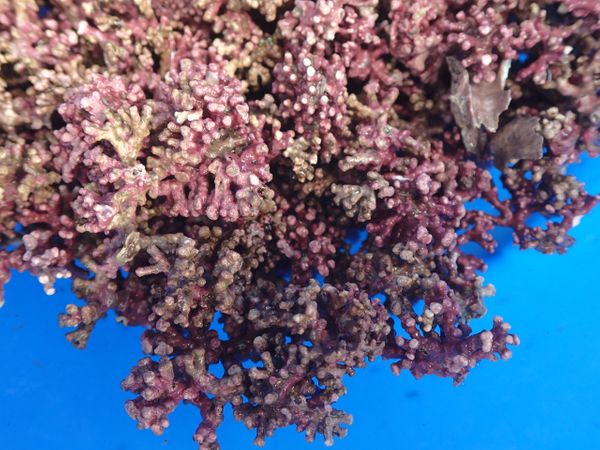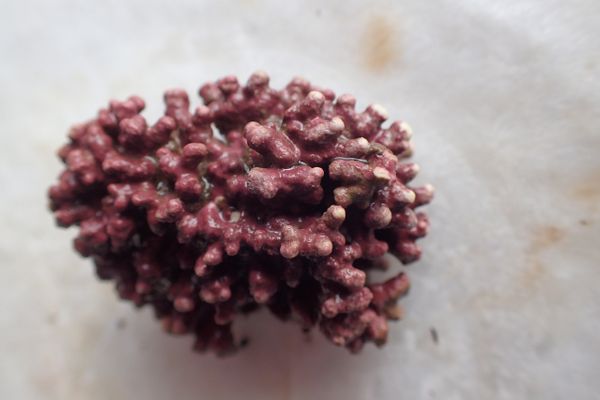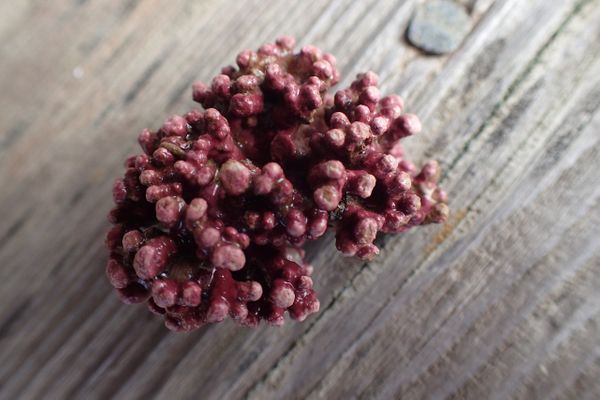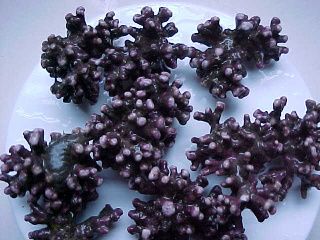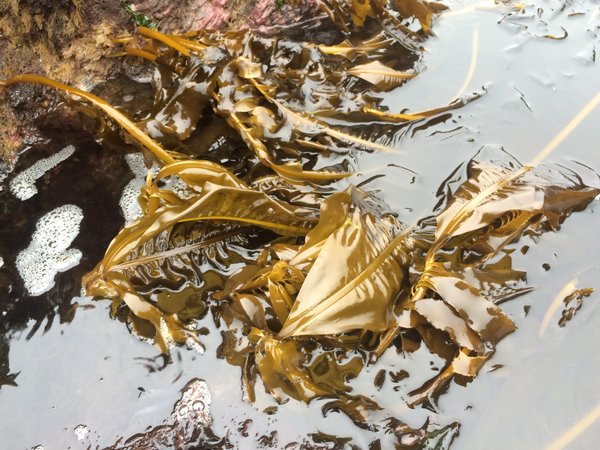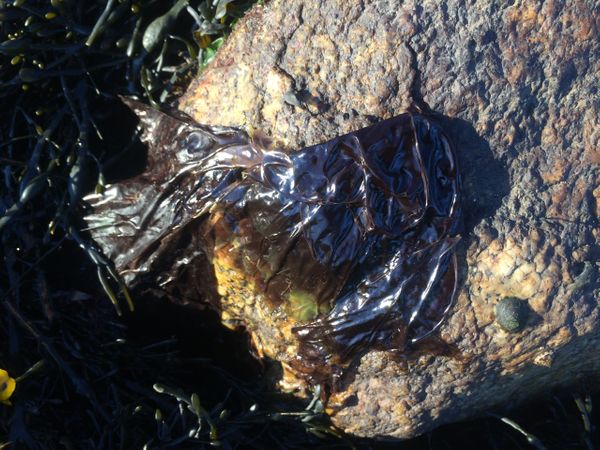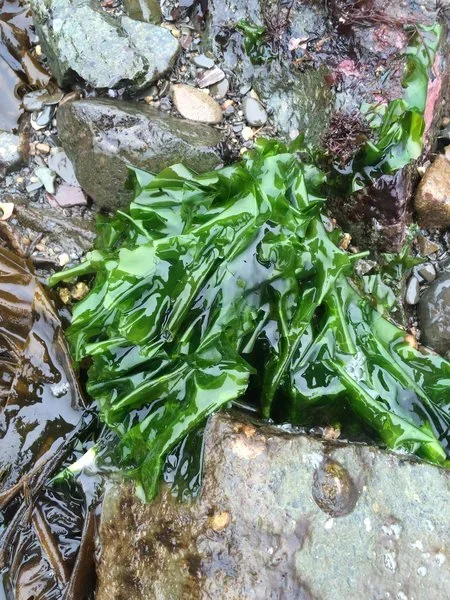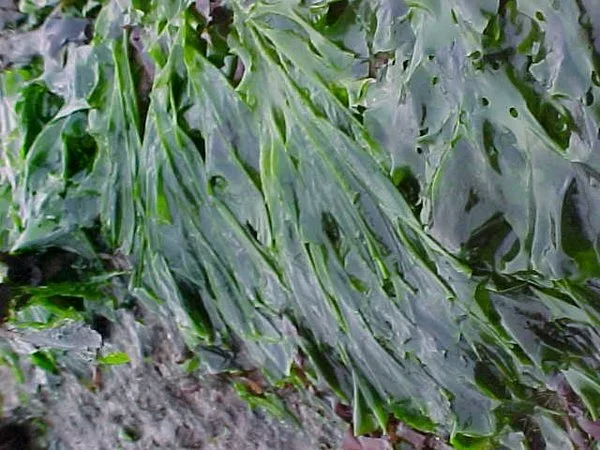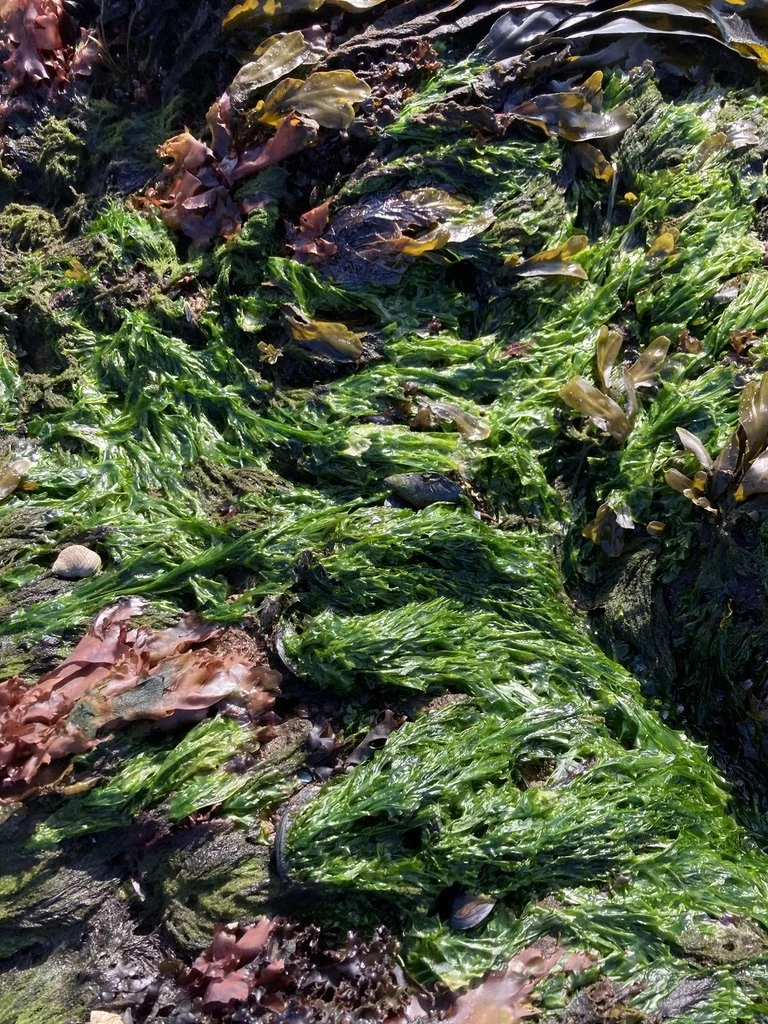This is a pail of 1" - 2" live rock communities.
Tidepool Tim says, "These macroalgal formations look just like coral, but they're technically seaweeds! These are wonderful for tank aesthetics. They also add oxygen to water like any other seaweed. This unique algal formation is interesting to view under a microscope too."



